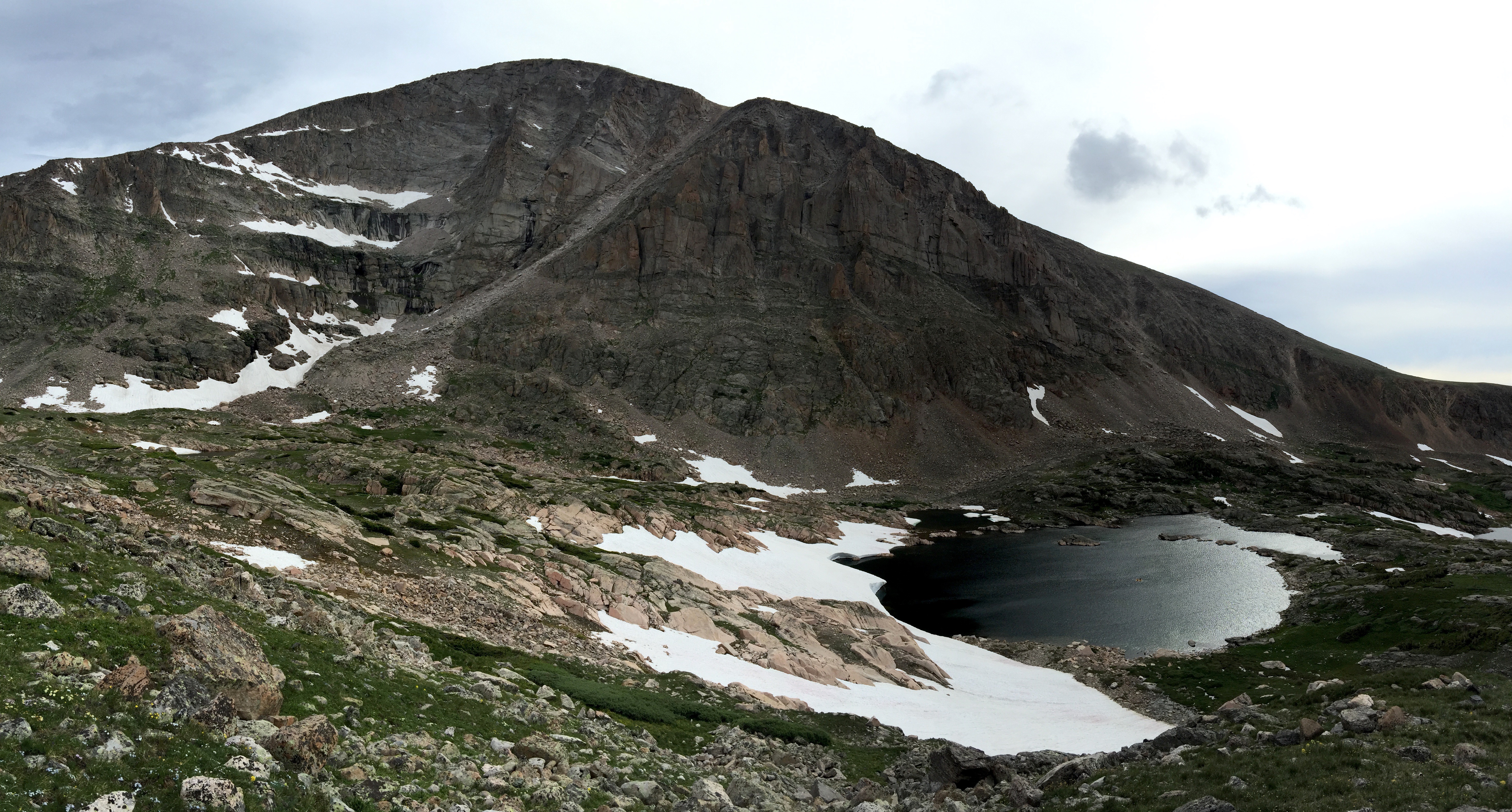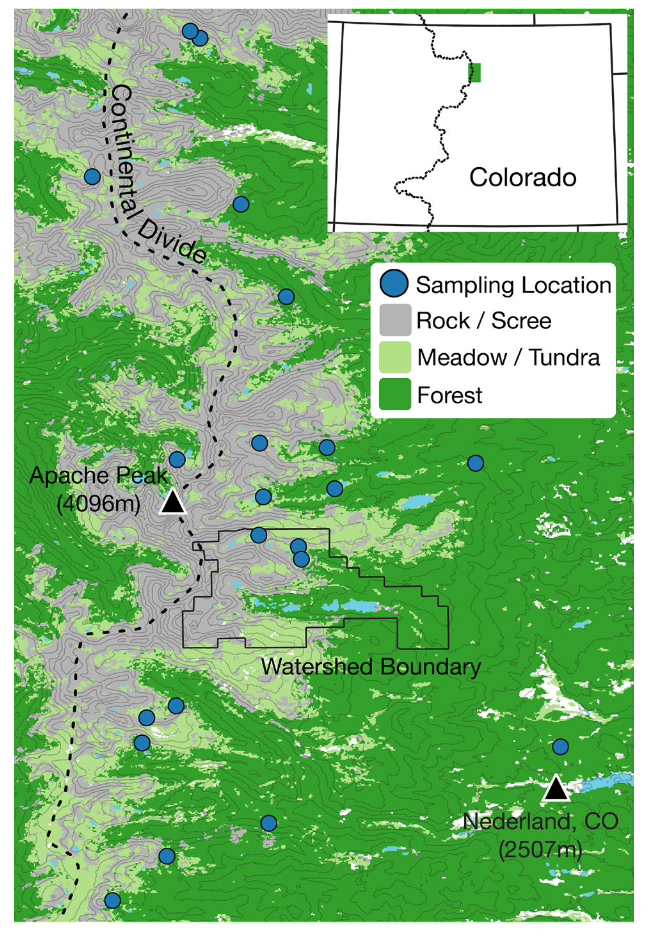The life aquatic in high relief: shifts in the physical and biological characteristics of alpine lakes along an elevation gradient in the Rocky Mountains, USA
In 2016 I lead a survey of mountain lakes ranging from 2480 to 3550 m a.s.l. in the Rocky Mountains of Colorado, USA. to investigate differences in ecological proccesses associated with landscape position.

Employing a mixed modeling framework, we uncovered noteworthy associations between elevation and nearly all measured physiochemical parameters affecting water quality. These patterns appear to be driven by the pronounced changes in climate, terrestrial inputs, and atmospheric deposition that vary substantially with altitude. Expanding our analysis to biological communities, we found compelling evidence supporting elevation as a niche filter, with gamma diversity markedly lower (46%) for lakes situated above the treeline.
Furthermore, we observed that in-lake communities exhibited greater dissimilarity based on elevation distance rather than UTM distance, defined here as the Euclidean distance between latitudinal and longitudinal coordinates. Lakes separated by 500 UTM meters were only 4% dissimilar, while those differing by 500 feet in elevation were, on average, 21% dissimilar. This underscores the pronounced impact of elevation on the composition of in-lake communities. (Link to datasets)
Link to article published in Aquatic Sciences. Download .pdf of article
Thanks to the various field team members especially Kathi Hell-Jaros, Josh Darling, Samuel Fonteneli, Dylan Rose, Henry Brandes and Holly Miller who helped collect and process the survey data; Johnson Laboratory, notably Dana Calhoun, for their comments on the manuscript; Travis McDevitt-Galles and Wynne Moss for their insights on data analysis; William Bowman, Jen Morse, and Katherine Suding for their logistical support of this project; and The City of Boulder, Rocky Mountain National Park, Arapahoe and Roosevelt National Forest and Boulder County Open Space for allowing us to collect data in their treasured aquatic environments. For comments helpful in revising the manuscript, we thank Sudeep Chandra, Steve Sadro, and Stuart Findlay.
This work was supported by Niwot Ridge Long Term Ecological Research Program (Link to Niwot Ridge LTER) and the Johnson Lab (Link to lab page) at University of Colorado Boulder as well as through the National Science Foundation (DEB-1637686 and DEB-1754171) and a fellowship from the David and Lucile Packard Foundation.

 Past work
Past work